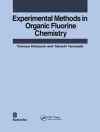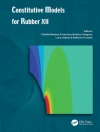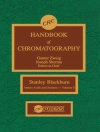Gradient elution demystified
Of the various ways in which chromatography is applied today, few
have been as misunderstood as the technique of gradient elution,
which presents many challenges compared to isocratic separation.
When properly explained, however, gradient elution can be less
difficult to understand and much easier to use than often
assumed.
Written by two well-known authorities in liquid chromatography,
High-Performance Gradient Elution: The Practical Application of the
Linear-Solvent-Strength Model takes the mystery out of the practice
of gradient elution and helps remove barriers to the practical
application of this important separation technique. The book
presents a systematic approach to the current understanding of
gradient elution, describing theory, methodology, and applications
across many of the fields that use liquid chromatography as a
primary analytical tool.
This up-to-date, practical, and comprehensive treatment of gradient
elution:
* Provides specific, step-by-step recommendations for developing a
gradient separation for any sample
* Describes the best approach for troubleshooting problems with
gradient methods
* Guides the reader on the equipment used for gradient
elution
* Lists which conditions should be varied first during method
development, and explains how to interpret scouting gradients
* Explains how to avoid problems in transferring gradient
methods
With a focus on the use of linear solvent strength (LSS) theory for
predicting gradient LC behavior and separations by reversed-phase
HPLC, High-Performance Gradient Elution gives every chromatographer
access to this useful tool.
Tabella dei contenuti
PREFACE.
GLOSSARY OF SYMBOLS AND TERMS.
1 INTRODUCTION.
1.1 The ‘General Elution Problem’ and the Need for Gradient Elution.
1.2 Other Reasons for the Use of Gradient Elution.
1.3 Gradient Shape.
1.4 Similarity of Isocratic and Gradient Elution.
1.5 Computer Simulation.
1.6 Sample Classification.
2 GRADIENT ELUTION FUNDAMENTALS.
2.1 Isocratic Separation.
2.2 Gradient Separation.
2.3 Effect of Gradient Conditions on Separation.
2.4 Related Topics.
3 METHOD DEVELOPMENT.
3.1 A Systematic Approach to Method Development.
3.2 Initial Experiments.
3.3 Developing a Gradient Separation: Resolution versus Conditions.
3.4 Computer Simulation.
3.5 Method Reproducibility and Related Topics.
3.6 Additional Means for an Increase in Separation Selectivity.
3.7 Orthogonal Separations.
4 GRADIENT EQUIPMENT.
4.1 Gradient System Design.
4.2 General Considerations in System Selection.
4.3 Measuring Gradient System Performance.
4.4 Dwell Volume Considerations.
5 SEPARATION ARTIFACTS AND TROUBLESHOOTING.
5.1 Avoiding Problems.
5.2 Method Transfer.
5.3 Column Equilibration.
5.4 Separation Artifacts.
5.5 Troubleshooting.
6 SEPARATION OF LARGE MOLECULES.
6.1 General Considerations.
6.2 Biomolecules.
6.3 Synthetic Polymers.
7 PREPARATIVE SEPARATIONS.
7.1 Introduction.
7.2 Isocratic Separation.
7.3 Gradient Separation.
7.4 Severely Overloaded Separation.
8 OTHER APPLICATIONS OF GRADIENT ELUTION.
8.1 Gradient Elution for LC-MS.
8.2 Ion-Exchange Chromatography.
8.3 Normal-Phase Chromatography.
8.4 Ternary- or Quaternary-Solvent Gradients.
9 THEORY AND DERIVATIONS.
9.1 The Linear Solvent Strength Model.
9.2 Second-Order Effects.
9.3. Accuracy of Gradient Elution Predictions.
9.4 Values of S.
9.5 Values of N in Gradient Elution.
Appendix I: THE CONSTANT-S APPROXIMATION IN GRADIENTELUTION.
Appendix II: ESTIMATION OF CONDITIONS FOR ISOCRATIC ELUTION, BASED ON AN INITIAL GRADIENT RUN.
Appendix III: CHARACTERIZATION OF REVERSED-PHASE COLUMNS FORSELECTIVITY AND PEAK TAILING.
Appendix IV: SOLVENT PROPERTIES RELEVANT TO THE USE OF GRADIENTELUTION.
Appendix V: THEORY OF PREPARATIVE SEPARATION.
Appendix VI FURTHER INFORMATION ON VIRUS CHROMATOGRAPHY.
Index.
Circa l’autore
LLOYD R. SNYDER, PHD, is a Principal at LC Resources in
Walnut Creek, California. He is the author or coauthor of several
books including An Introduction to Separation Science, Introduction
to Modern Liquid Chromatography, Second Edition, and the
bestselling Practical HPLC Method Development, Second Edition, all
published by Wiley.
JOHN W. DOLAN, PHD, is a Principal at LC Resources. He is
author of the popular ‘ LC Troubleshooting’ column in LCGC Magazine
and coauthor with Lloyd Snyder of Troubleshooting LC Systems.












